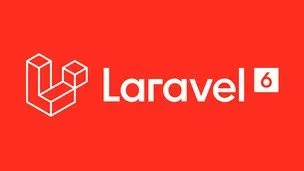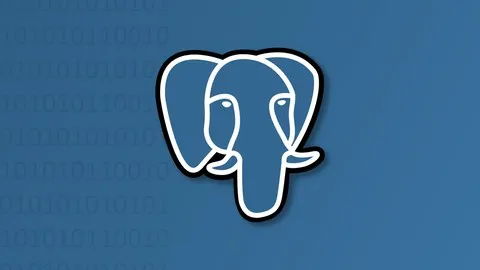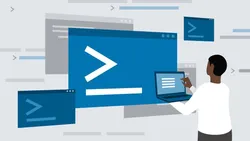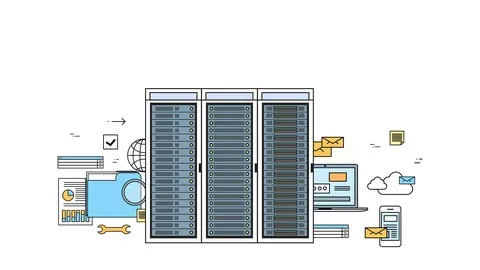
How to Build a Follow UnFollow System In PHP using Laravel 
This tutorial will guide you through the process of creating a Follow UnFollow system in PHP using Laravel, including how to partially refresh a page and set up realtime notifications using Axios. ▼
ADVERTISEMENT
Course Feature
![]() Cost:
Cost:
Free
![]() Provider:
Provider:
Udemy
![]() Certificate:
Certificate:
No Information
![]() Language:
Language:
English
![]() Start Date:
Start Date:
On-Demand
Course Overview
❗The content presented here is sourced directly from Udemy platform. For comprehensive course details, including enrollment information, simply click on the 'Go to class' link on our website.
Updated in [April 29th, 2023]
Course Overview:
This course is designed to teach you how to build a follow and unfollow system with PHP Laravel and MySQLI like Twitter and Facebook. You will learn how to partially refresh a page and setup realtime notification using axios, create a basic user login and authentication system using Laravel, validate users input without leaving the page using Axios, write codes using best practices, learn the follow, unfollow business logic, and learn how to show realtime data from the database without using Redis or Channels.
Possible Development Directions:
This course is suitable for both beginners and professionals. You will learn how to implement axios, a JavaScript library into your application, validate users input on your website without reloading the page, make every operation on your website look real-time, and understand the concept behind the follow & unfollow business logic. After completing this course, you will be able to build a follow and unfollow system like Twitter & Facebook.
Related Learning Suggestions:
If you want to further develop your skills in building a follow and unfollow system, you can explore other related topics such as user authentication & registration, real-time notification, best practices in coding, and data management. You can also look into other frameworks such as React and Node.js to create more complex applications.
[Applications]
After taking this course, students will be able to apply the concepts learned to build a follow and unfollow system like Twitter and Facebook. They will be able to create a basic user login and authentication system using Laravel, validate user input without leaving the page using Axios, write code using best practices, and learn how to show real-time data from the database without using Redis or Channels. Additionally, students will be able to understand the concept behind the follow and unfollow business logic.
[Career Paths]
1. Web Developer: Web developers are responsible for creating and maintaining websites. They use a variety of programming languages and frameworks to create websites that are both functional and visually appealing. Web developers must have a strong understanding of HTML, CSS, JavaScript, and other web development technologies. They must also be able to work with databases and other back-end technologies. With the increasing demand for web applications, web developers are in high demand and the job outlook is very positive.
2. Software Engineer: Software engineers are responsible for designing, developing, and testing software applications. They must have a strong understanding of computer science and software engineering principles. They must also be able to work with a variety of programming languages and frameworks. Software engineers must be able to work with databases and other back-end technologies. With the increasing demand for software applications, software engineers are in high demand and the job outlook is very positive.
3. Database Administrator: Database administrators are responsible for managing and maintaining databases. They must have a strong understanding of database technologies and be able to work with a variety of databases. Database administrators must be able to work with databases and other back-end technologies. With the increasing demand for data-driven applications, database administrators are in high demand and the job outlook is very positive.
4. DevOps Engineer: DevOps engineers are responsible for automating and managing the development, testing, and deployment of software applications. They must have a strong understanding of DevOps principles and be able to work with a variety of DevOps tools. DevOps engineers must be able to work with databases and other back-end technologies. With the increasing demand for DevOps engineers, the job outlook is very positive.
[Education Paths]
Recommended Degree Paths:
1. Bachelor of Science in Computer Science: This degree path focuses on the fundamentals of computer science, such as programming, software engineering, and computer architecture. It also covers topics such as artificial intelligence, machine learning, and data science. This degree path is ideal for those who want to pursue a career in software development, web development, or data science.
2. Master of Science in Information Technology: This degree path focuses on the application of technology to solve business problems. It covers topics such as database management, network security, and software engineering. This degree path is ideal for those who want to pursue a career in IT management, software engineering, or network security.
3. Master of Science in Cybersecurity: This degree path focuses on the security of computer systems and networks. It covers topics such as cryptography, network security, and digital forensics. This degree path is ideal for those who want to pursue a career in cybersecurity, digital forensics, or network security.
Developing Trends:
1. Cloud Computing: Cloud computing is becoming increasingly popular as businesses move away from traditional on-premise solutions. This trend is expected to continue as businesses look for more cost-effective and efficient ways to store and manage data.
2. Artificial Intelligence: Artificial intelligence is becoming increasingly popular as businesses look for ways to automate processes and make decisions faster. This trend is expected to continue as businesses look for ways to leverage AI to improve their operations.
3. Internet of Things: The Internet of Things (IoT) is becoming increasingly popular as businesses look for ways to connect devices and systems. This trend is expected to continue as businesses look for ways to leverage IoT to improve their operations.
Pros & Cons

Fun tutorial that is enjoyable to create.

Cool course for beginners.

Greate content.

Missing video and content.

Login function and dashboard setup missing.

Poor comprehensibility and many errors.
Course Provider

Provider Udemy's Stats at AZClass
Discussion and Reviews
0.0 (Based on 0 reviews)
Explore Similar Online Courses

Affinity Designer for ipad - Volume 3- Vector art- Drawing and Brushes

Interior Design for Beginners

RDBMS PostgreSQL

Intro To PostgreSQL Databases With PgAdmin For Beginners

PostgreSQL: Client Applications

Mastering SQL using Postgresql

Database Design and Basic SQL in PostgreSQL

PostgreSQL: Advanced Queries

Spatial SQL with Postgres : A language for geographers

Learn SQL Using PostgreSQL: From Zero to Hero

PostgreSQL Essential Training

Harvard CS50's Introduction to Programming with Python : Full University Course
 Related Categories
Related Categories
 Popular Providers
Popular Providers
Quiz
 Submitted Sucessfully
Submitted Sucessfully
1. What is the main purpose of this course?
2. Who is this course for?
3. What type of code will be used in this course?
4. What is Axios?
Correct Answer: It is a JavaScript library.


Start your review of How to Build a Follow UnFollow System In PHP using Laravel